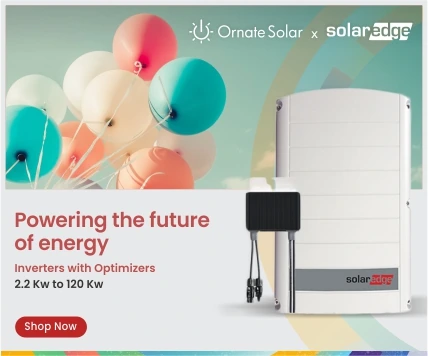
According to a report by JMK Research and the Institute for Energy Economics and Financial Analysis (IEEFA), India is likely to miss its 2022 objective of adding 100 gigawatts (GW) of solar generating capacity, owing to a lack of rooftop solar adoption.
India’s total installed solar capacity was 55GW as of December 2021, with grid-connected utility-scale projects accounting for 77% and grid-connected rooftop solar (20%) and mini or micro off-grid projects accounting for the balance (3 percent ).
Only about half of the 100GW target has been met with only eight months left in 2022, consisting of 60GW of utility-scale and 40GW of rooftop solar capacity.
In 2022, a total of 19 GW of solar power is scheduled to be added, with 15.8 GW coming from utility-scale solar and 3.5 GW coming from rooftop solar.
“Even with this capacity expansion, around 27% of India’s 100GW solar objective would remain unmet,” said Jyoti Gulia, founder of JMK Research and a co-author.
According to the study, the 40GW rooftop solar objective will fall short by 25GW by December 2022, compared to just 1.8GW for the utility-scale solar plant.
Call for concerted efforts
“The expansion of utility-scale solar capacity is on track. “India is on track to meet roughly 97 percent of its 60GW objective,” Ms. Gulia said. “It is therefore critical to make a more determined effort to expand rooftop solar.”
Solar power is a key component of India’s promise to address global warming by the Paris Agreement’s provisions, as well as achieve net-zero carbon emissions by 2070.
At the United Nations Conference of Parties meeting in Glasgow in November 2021, Prime Minister Narendra Modi stated that India would reach a non-fossil fuel energy capacity of 500 GW by 2030 and cover half of its energy needs with renewable energy. According to the analysis, India’s solar aim of 300GW by 2030 will be off by around 86GW, or about a third, if current trends continue.
Impeding factors
“A series of difficulties are impeding overall progress on renewable energy targets,” says co-author Vibhuti Garg, IEEFA’s Energy Economist, and Lead India.
The report suggests “immediate and long-term steps” to get back on track. These include standard rules that should be applied nationally for at least the next five years, consistent net metering and banking regulations that should be applied nationally, and stringent enforcement of corporations’ renewable purchase obligations (RPO). “In the short term, it’s also probable that the government would push hard to accelerate solar capacity development to meet the 100GW objective by 2022 by re-allocating some of the unmet rooftop targets to utility-scale power,” Ms. Gulia noted.
Click Here for more updates ornatesolar.com








Leave A Comment